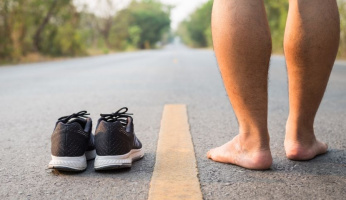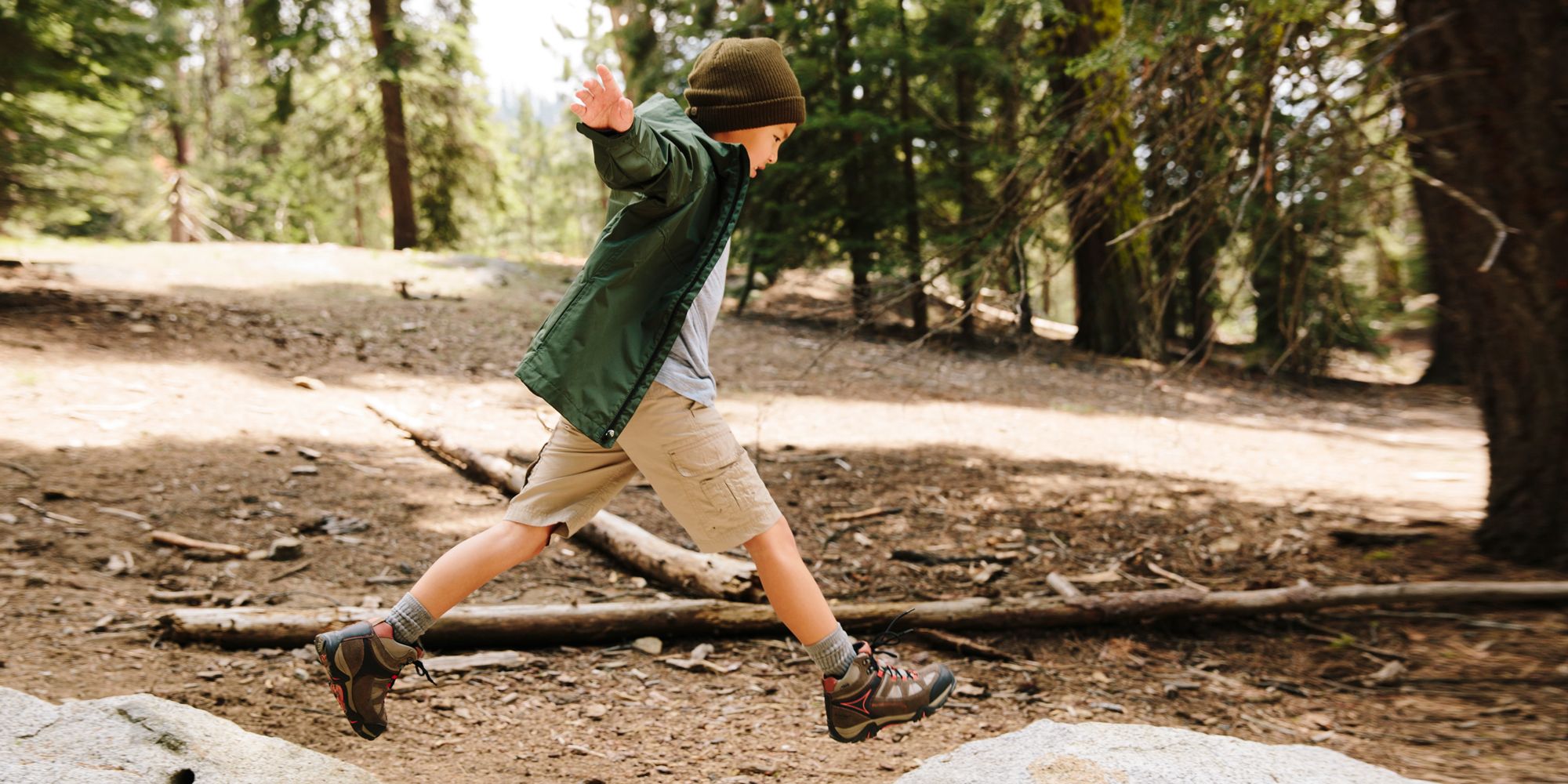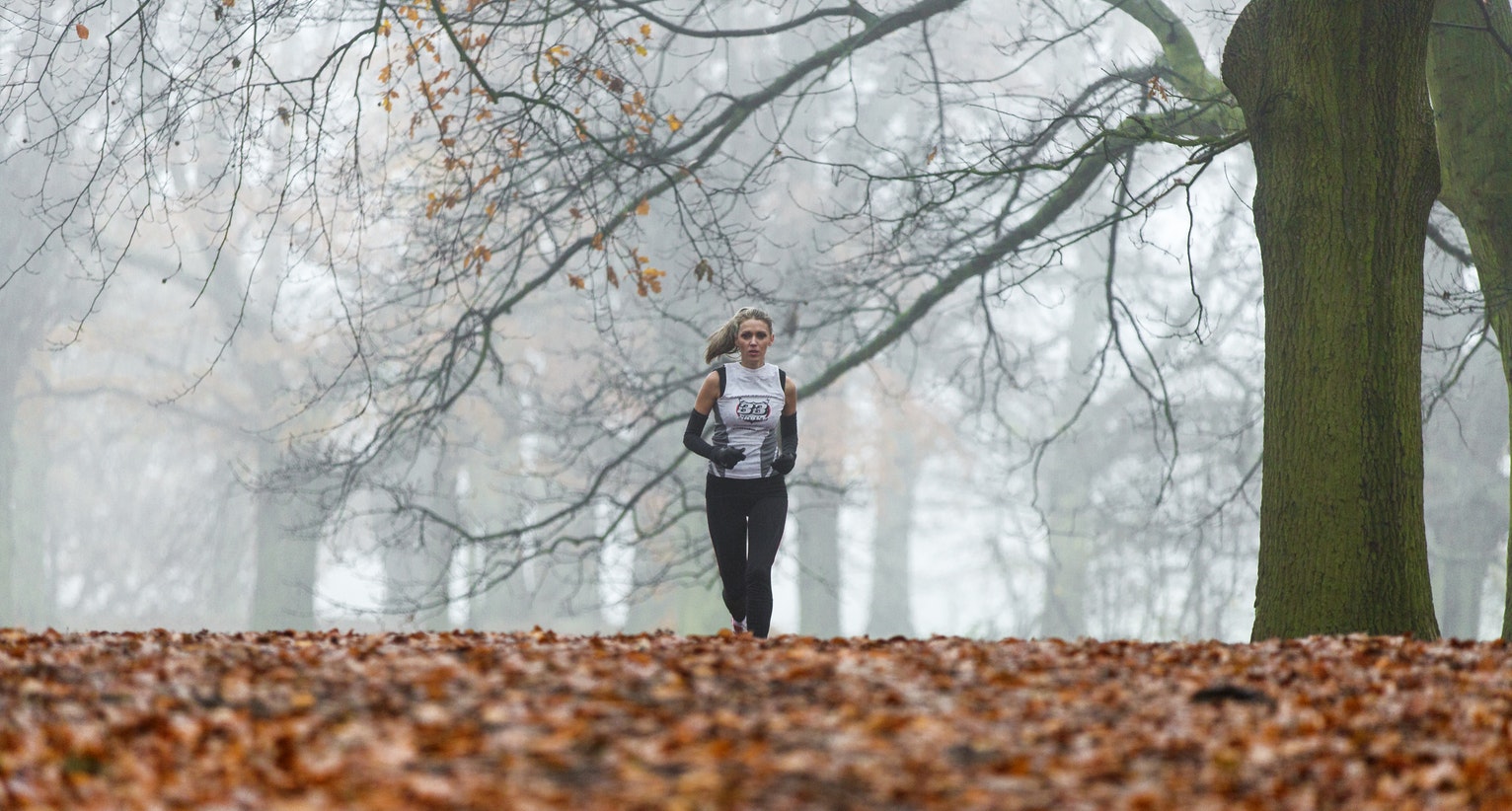When Should Runners Stretch?
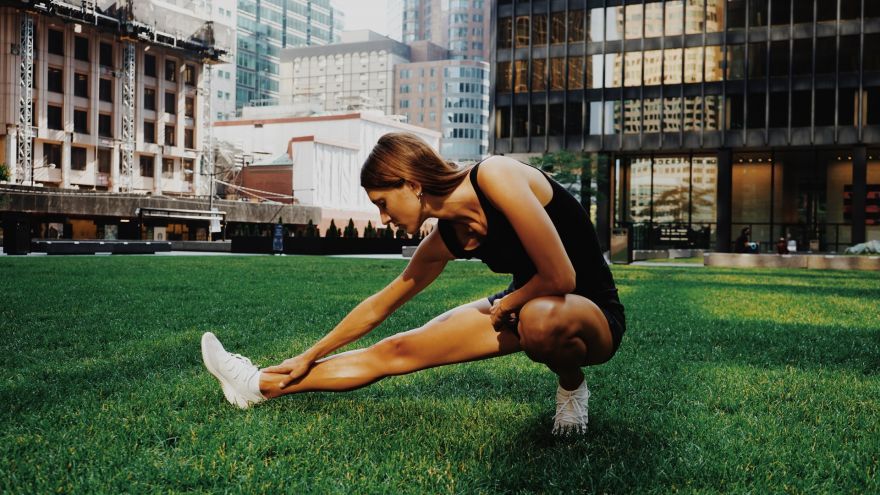 When Should Runners Stretch? www.walkjogrun.net
When Should Runners Stretch? www.walkjogrun.net If you are looking for some good life advice, just watch a house cat. Before you decide that I am crazy, hear me out. Besides laying in sunbeams and napping an awful lot, what is the one thing you see a cat constantly doing? You got it. Stretching!
Most runners do not stretch nearly enough. If you are hoping to improve your running and keep yourself as injury-free as possible, adding some stretching to your workout regiment will help you a great deal. Sounds easy, right? But many athletes are not sure how often to stretch, what kinds of stretches are best, and when to stretch to begin with.
When To Stretch?
Based on my 25 years of coaching and running experience, runners should stretch both before and after running. And that does not mean just any kind of stretching. Runners benefit from dynamic stretching and movements before running and static stretching post-run.
What is the difference? Dynamic stretches, which should be done as part of a warm-up, are movement-based stretches. In these active movements, your body naturally goes through motions that challenge them further with each attempt. What happens is your body naturally warms up and the stretches get deeper as you go through the motions.
Sometimes dynamic stretches are actually functional in that they will mimic the movements you are about to do in your sport. For example, a swimmer might warm up with a shoulder rotation similar to that you would do in a freestyle front crawl. A pitcher might “throw” without a ball actually leaving the hand.
To be fair and thorough, I need to point out that some runners do need to do some static stretching before running. This is often to achieve a deeper stretch on part of the body that causes the athlete chronic problems. After my dynamic warm-up, I always do a few static stretches on my hamstring. Since I struggle with frequent hamstring pain and discomfort, this helps keep me running.
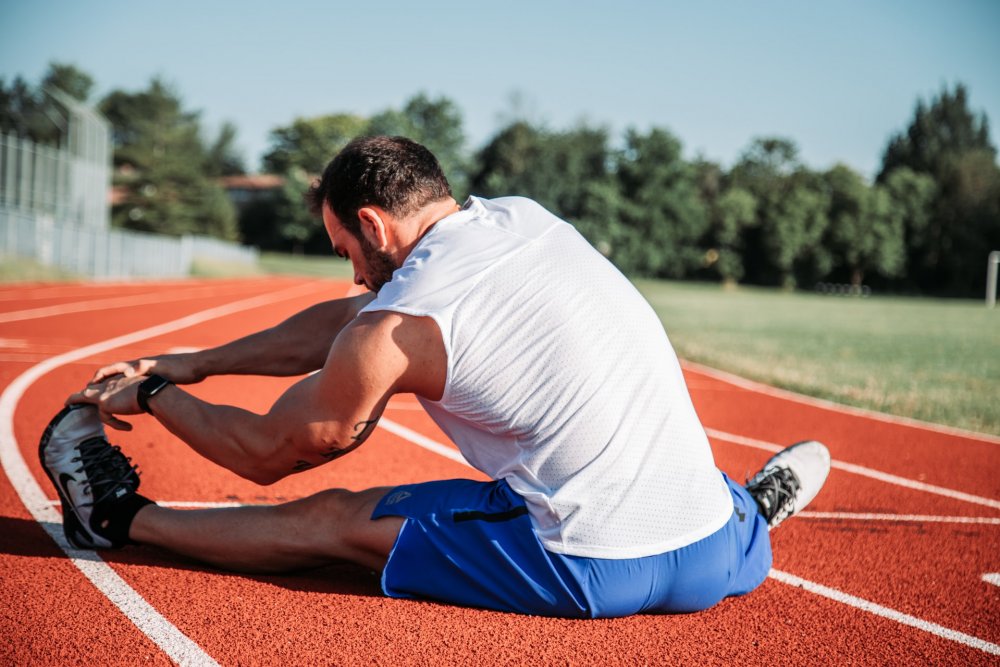
For most runners, static stretches are best for post-running. In a static stretch, the muscle is stretched then “held” for a period of time. Static stretching will elongate the muscle and can improve flexibility over time. However, it can also lead to injury if you do it on cold muscles.
If you have ever done yoga, you have likely used static stretching. Pay attention next time you practice yoga. You will see that the instructor starts with motion and fluid movements. Any static stretching will be very light in the beginning. As your body warms up, you will be challenged with holds that are held in place longer and elongate the muscles more.
Stretching needs to be very methodical and intentional if you plan to do it without getting hurt. This is one reason why static stretching is best after running, when. your body is warmed up.
An excellent part of any runner’s cool down, you are doing great things for your body if you go from a hard run to a gentle jog, then stretch your body out.
What Happens If You Don’t Stretch After Running?
If you fail to stretch properly, your body may experience tightness and discomfort. A gentle and thorough stretch will help your body to go from vigorous movement to ending activity. But did you know that there is way more to it than that?
There are many benefits of stretching:
✓ Stretching reduces lactic acid: It can actually help your body to reduce the lactic acid accumulation that can build up after a tough workout.
✓ Limits muscle strain: Stretching can help keep your muscles flexible, which can reduce the chances of injury.
✓ Limits joint strain: If you are looking to reduce the strain on your joints, stretching can also help with that!
✓ Improves Heart Function: A good workout gets your heart pumping which is excellent! Did you know that it is equally as important to facilitate your cool down properly? Cooling down with stretching puts your heart in the best position to transition from hard work to rest.
How Long Should You Hold a Stretch?
When static stretching, you will hold each stretch for anywhere from 15 to 60 seconds. When you are new to a stretch, you should plan to hold it for a shorter period of time. Once you have jogged, cycled or done some other easy movement to warm up, then gone through your dynamic warm-up routine, you are ready to stretch.
The first few times you do a stretch, you may only hold the movement for 15 seconds. That is okay! You are better off doing the stretch four times for 15 seconds each time than trying to hold it too long before you are ready. Some movements show a nominal difference between holding 4×15 or holding for :60 solid seconds.
Once you get better at certain stretches, you will find you can hold them for a longer period of time. As mentioned before, if you are looking to improve your flexibility, yoga might be an excellent tool.
What is a Good Stretch for Running?
There are many excellent runner stretches. When choosing dynamic stretches, you should look for some that mimic running movement. some good choices are:
Leg Swings (Abductor and Adductor): In this movement, you are standing on one leg and swinging the other leg both in front of then behind the leg you are balanced on.
Leg Swings (Hamstring and Hip Flexor): You are still standing on one leg for this stretch. You may find you need something to hold onto for balance. With your knee slightly bent, swing the leg forward and backward.
High Knees: In this drill/active stretch, you should “jog” forward taking small steps and exaggerated “high knees.” Your arms should move like you are running.
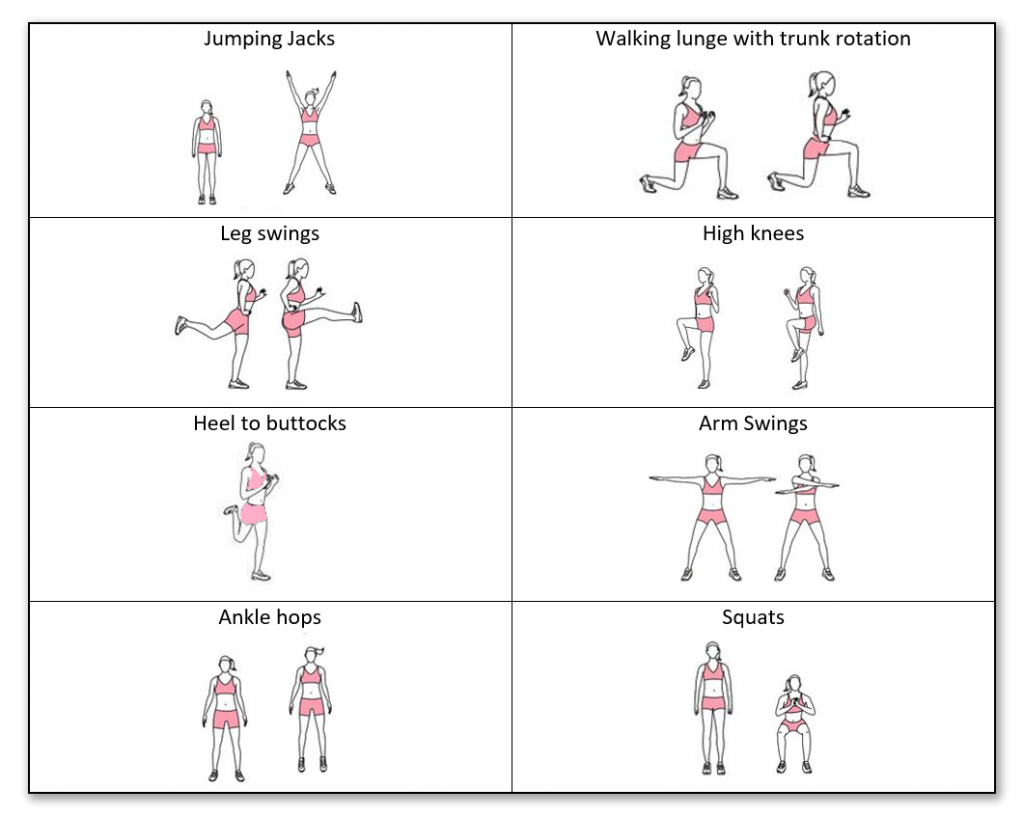
Power Skips: This is skipping with a twist. You either power skip for distance or height (both are excellent). A power skip is where you do so in an exaggerated movement either very high (when skipping for height) or very far (for distance).
Quick Feet: Quick feet is a drill where you take tiny baby steps forward, while moving your arms fast to match your foot movement. This movement works on fast firing.
Carioca: This is a quick movement that can be complicated at first. You will be moving to the side in this drill. First, you cross your right foot in front of your left and shift your weight to the front of your right foot. Next, you should move your left foot to the side (you will be standing normal for a fraction of a second).
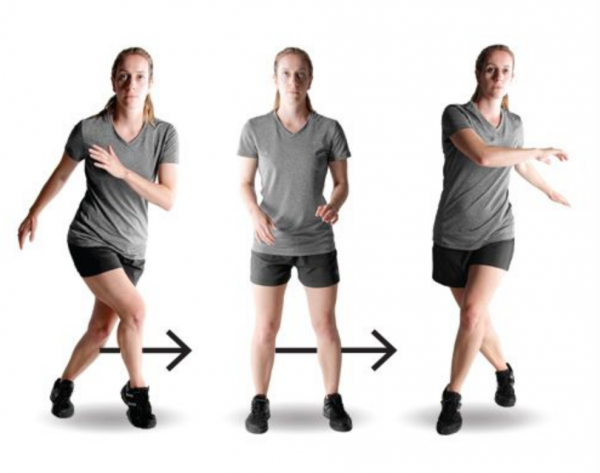
Then, you cross your right foot behind your left and shift your weight to the ball of your right foot. Now you move your left foot to the side, so you are again “standing normal” for a brief second. This drill should be done with high knees and quick movements.
After doing some active or dynamic movements and stretches, you can move into static stretches. Some of the stretches that stand the test of time are here:
Hamstring Stretch: Standing on one leg, bend the other leg and with your arms, pull the knee up into your chest.
Quad Stretch: Again standing on your left leg, grasp the right ankle with your right hand. Pull your right foot up into your butt area, and hold. Switch to do the movement on your opposite side of the body.
Toe-Up Achilles Stretch: Put one foot forward, with the toe up against a solid surface such as a wall. The heel should be solidly on the ground, lean forward to stretch.
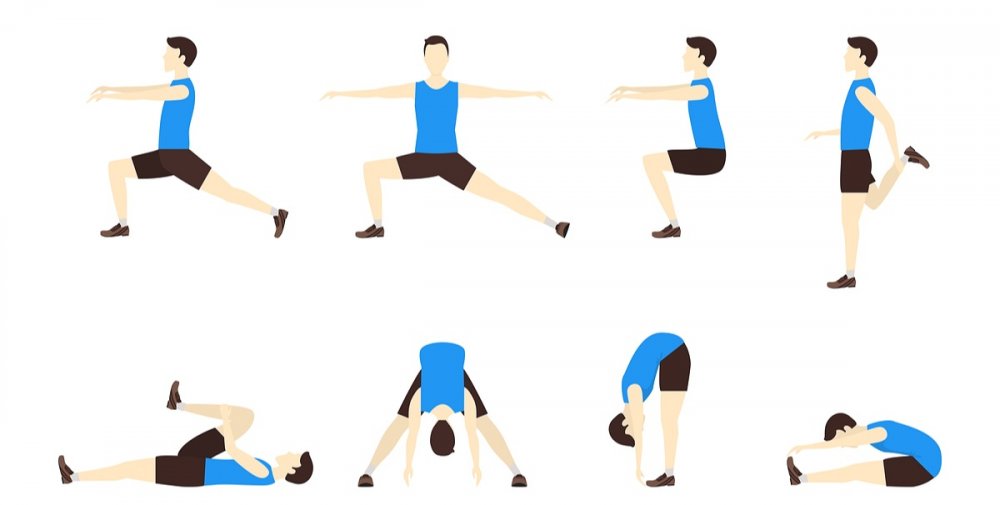
Leg Back Calf Stretch: With your feet firmly on the ground, step back with the left foot. Bend your right knee and lean slightly forward. You should feel a stretch in your left calf. Switch sides.
Seated Butterfly Stretch: Sit on the ground, knees bent, feet together. Gently bring your feet in and push down on your knees.
Every runner should enjoy some stretching in order to keep their body happy and healthy. Now that you have some basic knowledge, try these.
If you have areas of your body that you feel need more attention, research body part-specific stretches. There are many good movements out there!





